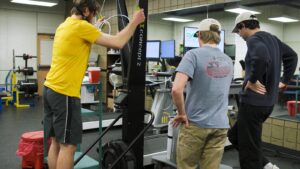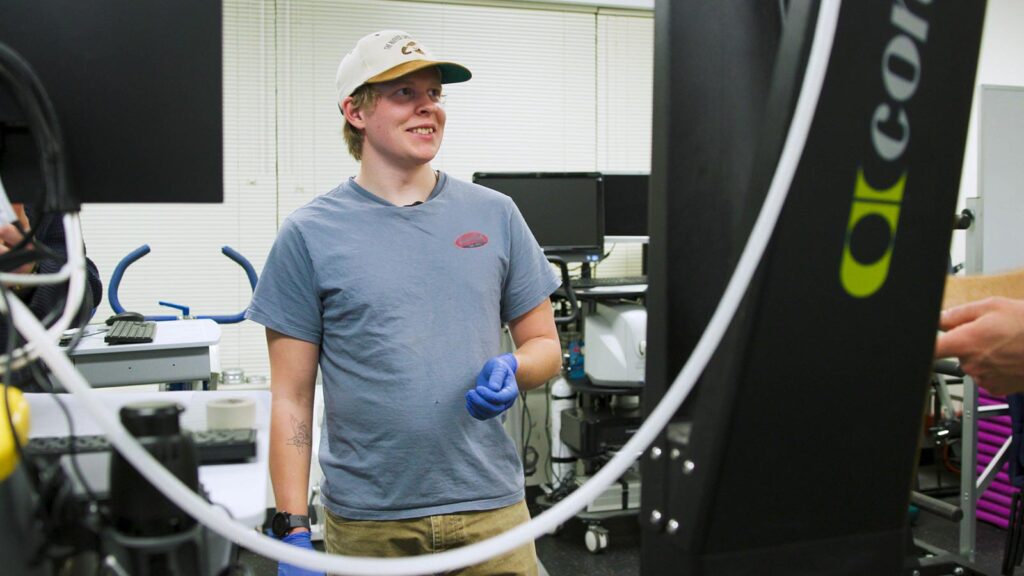April 16, 2025
Finding the perfect cadence: Exercise Physiology students push the limits
At The College of St. Scholastica, students are not just learning about the science of exercise; they’re actively shaping the future of athletic training and performance. Exercise Physiology majors Sam Haynes ’26 and Trygve Rux ’26 are leading research to investigate the critical factors that affect athletic performance.
Their pilot study explores the interplay between movement cadence, oxygen consumption (VO2) and lactate levels during physical activity. According to Haynes, they hope to find an ideal cadence: “We are looking at how different cadences affect VO2 and lactate, and we’re trying to find one that’s optimal for them.”
The research involved analyzing how different exercise rhythms impact the body during physical exertion. Participants completed a series of exercise intervals. After each set, Rux performed a lactate test by collecting a blood sample. Meanwhile, they monitored the VO2 levels, comparing results from across different movement speeds.
Finding the ideal pace
 Their findings so far have provided significant insights: the slowest movement cadence resulted in the high lactate levels, whereas the fastest cadence corresponded to the highest VO2 consumption. Now, the challenge is to find the ideal pace where athletes can maintain peak performance without succumbing to fatigue caused by excess lactate production.
Their findings so far have provided significant insights: the slowest movement cadence resulted in the high lactate levels, whereas the fastest cadence corresponded to the highest VO2 consumption. Now, the challenge is to find the ideal pace where athletes can maintain peak performance without succumbing to fatigue caused by excess lactate production.
This initial research is not just an academic exercise; it has real-world applications for athletes looking to maximize their performance. By testing various movement rates, Haynes and Rux are discovering vital information that could lead to tailored training programs for endurance athletes.
St. Scholastica’s commitment to experiential learning allows exercise physiology students, like Haynes and Rux, to engage in meaningful research that prepares them to attend graduate school or start work in a variety of health and fitness fields.


